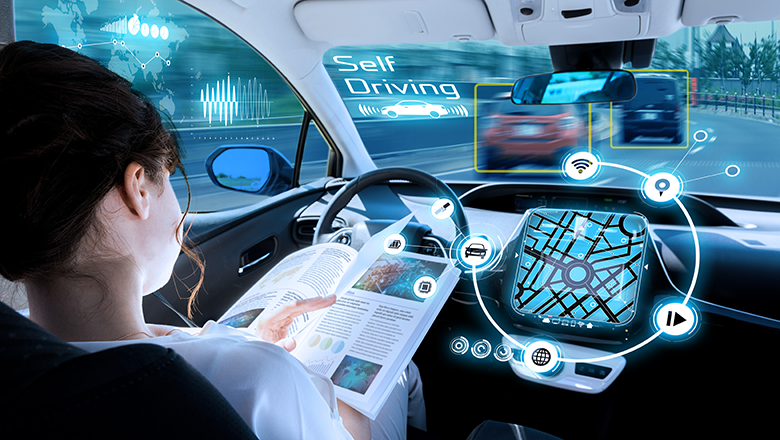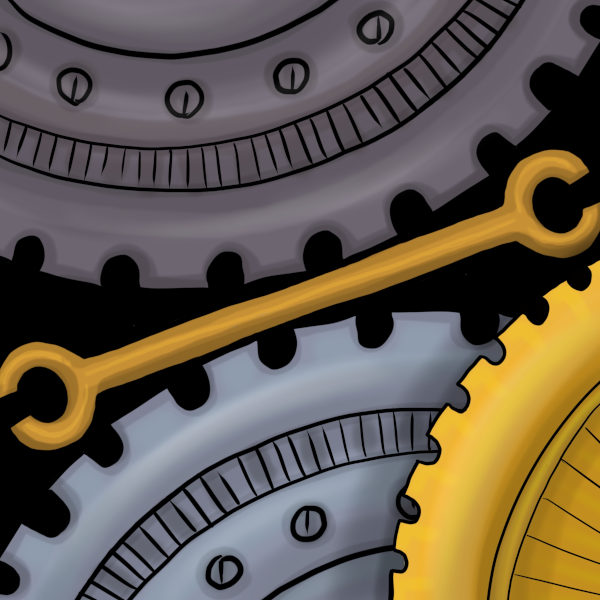Driverless cars worse at detecting children and darker-skinned pedestrians say scientists::Researchers call for tighter regulations following major age and race-based discrepancies in AI autonomous systems.
Easy solution is to enforce a buddy system. For every black person walking alone at night must accompanied by a white person. /s
Isn’t that true for humans as well? I know I find it harder to see children due to the small size and dark skinned people at night due to, you know, low contrast (especially if they are wearing dark clothes).
Human vision be racist and ageist
Ps: but yes, please do improve the algorithms
Part of the children problem is distinguishing between ‘small’ and ‘far away’. Humans seem reasonably good at it, but from what I’ve seen AIs aren’t there yet.
Yeah This probably accounts for 90% of the issue.
LiDAR doesn’t see skin color or age. Radar doesn’t either. Infra-red doesn’t either.
LiDAR, radar and infra-red may still perform worse on children due to children being smaller and therefore there would be fewer contact points from the LiDAR reflection.
I work in a self driving R&D lab.
Would you be willing to share some neato stuff about your job with us?
How about skin color? Does darker skin reflect LiDAR/infrared the same way as light skin?
Infrared cameras don’t depend on you reflecting infrared. You’re emitting it.
All matter emits light; the frequencies that it’s brightest in depend on the matter’s temperature. Objects around human body temperature mostly glow in the long-wave infrared. It doesn’t matter what your skin color is; “color” is a different chunk of spectrum.
Sorry, I misunderstood. I know about all that, I just thought it meant active infrared lighted cameras. So basically, an IR light on the car, illuminating the road ahead, and then just using a near-IR camera like a regular optical camera.
I didn’t think it meant a far-IR camera passively filming black body radiation, because I thought the resolution (both spacially and temporally) of these cameras is usually really low. Didn’t think they were fast and high-res enough to be used on cars.
That’s a fair observation! LiDAR, radar, and infra-red systems might not directly detect skin color or age, but the point being made in the article is that there are challenges when it comes to accurately detecting darker-skinned pedestrians and children. It seems that the bias could stem from the data used to train these AI systems, which may not have enough diverse representation.
The main issue, as someone else pointed out as well, is in image detection systems only, which is what this article is primarily discussing. Lidar does have its own drawbacks, however. I wouldn’t be surprised if those systems would still not detect children as reliably. Skin color wouldn’t definitely be a consideration for it, though, as that’s not really how that tech works.
Do lidar and infrared work equally on white and black people? Both are still optical systems, and I don’t know how well black people reflect infrared light.
Seriously no pun intended: infrared cameras see black-body radiation, which depends on the temperature of the object being imaged, not its surface chemistry. As long as a person has a live human body temperature, they’re glowing with plenty of long-wave IR to see them, regardless of their skin melanin content.
I thought we were talking about near-IR cameras using active illumination (so, an IR spotlight).
I didn’t think low-wave IR cameras are fast enough and have enough resolution to be used on a car. Every one I have seen so far gives you a low-res low-FPS image, because there just isn’t enough long-wave IR falling into the lens.
You know, on any camera you have to balance exposure time and noise/resolution with the amount of light getting into the lens. If the amount of light decreases, you have to either take longer exposures (->lower FPS), decrease the resolution (so that more light falls onto one pixel), or increase the ISO, thereby increasing noise. Or increase the lens diameter, but that’s not always an option.
And since long-wave IR has super little “light”, I didn’t think the result would work for cars, which do need a decent amount of resolution, high FPS and low noise so that their image recognition algos aren’t confused.
DRIVERLESS CARS: We killed them. We killed them all. They’re dead, every single one of them. And not just the pedestmen, but the pedestwomen and the pedestchildren, too. We slaughtered them like animals. We hate them!
Wouldn’t good driverless cars use radars or lidars or whatever? Seems like the biggest issue here is that darker skin tones are harder for cameras to see
Tesla removed the LiDAR from their cars, a step backwards if you ask me.
Seems like Tesla is really not going to be the market leader on this. IDK if anytime else caught those videos by the self driving tech expert going through all the ways Tesla is bullshitting about it.
Hey, they’ll have full self driving tech next year!
Source: Elon Musk, every year, for like the last ten years.
I think many driverless car companies insist on only using cameras. I guess lidars/radars are expensive.
Maybe if we just, I dunno, funded more mass transit and made it more accessible? Hell, trains are way better at being automated than any single car.
Yes, but also improve kid and dark skin people detection tools, they don’t work just for driving cars. Efficient, fast and accurate people detection and tracking tools can be used in other myriad of stuff.
Imagine a system that tracks the amount of people in different sections of the store, a system that checks the amount of people going in and out of stores to control how many are inside… There’s a lot of tools that already do this, but and they works somewhat reliably, but they can be improved, and the models being developed for cars will then be reused. I+D is a good thing.
The trains in California are trash. I’d love to see good ones, but this isn’t even a thought in the heads of those who run things.
Dreaming is nice… But reality sucks, and we need to deal with it. Self driving cars are a wonderful answer, but Tesla, is fucking it up for everyone.
Strongly disagree. Trains are nice everywhere in the world. There’s no reason they can’t be nice in the US. Cars are trash. Strip malls are trash. Giant parking lots are trash. The sky high cost of cars is trash. The environmental impact of cars is trash. The danger of cars is trash. Car centric urban planning is trash.
Self-driving cars are safer… than the most dangerous thing ever. But because cars are inherently so dangerous, they are still more dangerous than just about any other mode of transportation.
Dreaming is nice, but that’s all self-driving cars are right now. I don’t see why we don’t have better dreams.
Chiming in from Seattle, we just built light rail up here and it’s just awful how slow they made it. It has its own track… It’s insane that it’s slower than driving in traffic. But they wanted to serve every neighborhood possible instead of realizing trains are not a last mile solution unless you build cities specifically around it.
Reporting from Vancouver, Canada. Our skytrain system is very fast and reliable. Comes every 1-3 minutes. I’ve never heard any complaints.
I looked this up and I was surprised to learn that the skytrain speed is 25-40km/h (20-25mph) while Seattle’s Link transit goes 35-55mph. That sounds very fast for a city transit system! Are you sure it’s slower than a car in traffic, with all the stop lights and rush hour? I’m skeptical but I’ve never used Link.
Google maps right now puts the light rail at one hour on light rail for what is a 23 minute drive. Last time I rode it, it took over an hour and a half for that same trip, and that’s excluding the time waiting for the train.
Trains in California suck because of government dysfunction across all levels. At the municipal level, you can’t build shit because every city is actually an agglomeration of hundreds of tiny municipalities that all squabble with each other. At the regional level, you get NIMBYism that doesn’t want silly things like trains knocking down property values… And these people have a voice, because democracy I guess (despite there being a far larger group of people that would love to have trains). At the state level, you have complete funding mismanagement and project management malfeasance that makes projects both incredibly expensive and developed with no forethought whatsoever (Caltrain has how many at-grade crossings, again?).
This isn’t a train problem, it’s a problem with your piss-poor government. At least crime is down, right?
I’m sick of the implication that computer programmers are intentionally or unintentionally adding racial bias to AI systems. As if a massive percentage of software developers in NA aren’t people of color. When can we have the discussion where we talk about how photosensitive technology and contrast ratio works?
Self driving cars are republicans?
Built by them, inherited their biases.
They just want to do abortions on the road. Just a few years after birth.
deleted by creator
What? No. They’d need to recognise them better - otherwise how can they swerve to make sure they hit them?
The study only used images and the image recognition system, so this will only be accurate for self driving systems that operate purely on image recognition. The only one that does that currently is Tesla AFAIK.
Probably could have stopped that headline at the third word.
This has been the case with pretty much every single piece of computer-vision software to ever exist…
Darker individuals blend into dark backgrounds better than lighter skinned individuals. Dark backgrounds are more common that light ones, ie; the absence of sufficient light is more common than 24/7 well-lit environments.
Obviously computer vision will struggle more with darker individuals.
Visible light is racist.
Visible light: (͡•_ ͡• )
If the computer vision model can’t detect edges around a human-shaped object, that’s usually a dataset issue or a sensor (data collection) issue… And it sure as hell isn’t a sensor issue because humans do the task just fine.
Do they? People driving at night quite often have a hard time seeing pedestrians wearing dark colors.
And it sure as hell isn’t a sensor issue because humans do the task just fine.
Sounds like you have never reviewed dash camera video or low light photography.
I’d assume that’s either due to bias in the training set, or poor design choices. The former is already a big problem in facial recognition, and can’t really be fixed unless we update datasets. With the latter, this could be using things like visible light for classification, where the contrast between target and background won’t necessarily be the same for all skin tones and times os day. Cars aren’t limited by DNA to only grow a specific type of eye, and you can still create training data from things like infrared or LIDAR. In either case though, it goes to show how important it is to test for bias in datasets and deal with it before actually deploying anything…
In this case it’s likely partly a signal to noise problem that can’t be mitigated easily. Both children and dark skinned people produce less signal to a camera because they reflect less light. children because they’re smaller, and dark skinned people because their skin tones are darker. This will cause issues in the stereo vision algorithms that are finding objects and getting distance to them. Lidar would solve the issue, but companies don’t want to use it because lidars with a fast enough update rate and high enough resolution for safe highway driving are prohibitively expensive for a passenger vehicle (60k+ for just the sensor)
Darker toned people are harder to detect because they reflect less light. The tiny cheap sensors on cameras do not have enough aperture for lower light detections. It’s not training that’s the problem it’s hardware.
Weird question, but why does a car need to know if it’s a person or not? Like regardless of if it’s a person or a car or a pole, maybe don’t drive into it?
Is it about predicting whether it’s going to move into your path? Well can’t you just just LIDAR to detect an object moving and predict the path, why does it matter if it’s a person?
Cameras and image recognition are cheaper than LIDAR/RADAR, so Tesla uses it exclusively.
They need to safely ignore shadows, oil stains on the road, just because there’s contrast on an image doesn’t mean it’s an object.
Sure but why on earth are we relying on cameras to drive cars? Many modern cars have radar, which is far more reliable.
Natural vision is awesome, it works for billions of humans. We just have nothing close to what the human eyes and brain offers in terms of tech in that spectrum.
I think it needs to be a combination of sensors since radar sucks in the rain/snow/fog.
Conant and Ashby’s good regulator theorem in cybernetics says, “Every good regulator of a system must be a model of that system.”
The AI needs an accurate model of a human to predict how humans move. Predicting the path of a human is different than predicting the path of other objects. Humans can stand totally motionless, pivot, run across the street at a red light, suddenly stop, fall over from a heart attack, be curled up or splayed out drunk, slip backwards on some ice, etc. And it would be computationally costly, inaccurate, and pointless to model non-humans in these ways.
I also think trolley problem considerations come into play, but more like normativity in general. The consequences of driving quickly amongst humans is higher than amongst human height trees. I don’t mind if a car drives at a normal speed on a tree lined street, but it should slow down on a street lined with playing children who could jump out at anytime.
Anyone who quotes Ashby et al gets an upvote from me! I’m always so excited to see cybernetic thinking in the wild.
A single flir camera would help massively. They don’t care about colour or height. Only temperature.
I could make a warm water balloon in the shape of a human and it would stop the car then. Maybe a combination of all various types of technologies? You’d still have to train the model on all various kinds of humans though.
Im not expert, but perhaps thermal camera + lidar sensor could help.
It’s amazing Elon hasn’t figured this out. Then again, Steve Jobs said no iPhone would ever have an OLED screen.
We should just assume CEO’s are stupid at this point. Seriously. It’s a very common trend we all keep seeing. If they prove otherwise, then that’s great! But let’s start them at “dumbass” and move forward from there.













